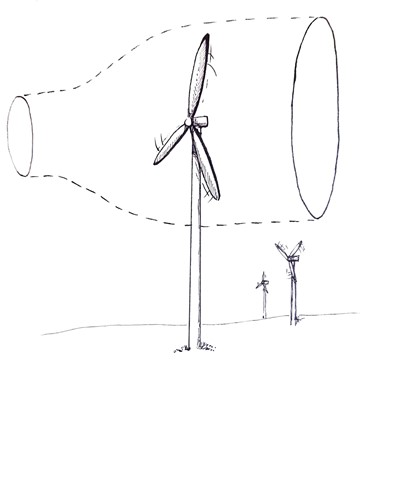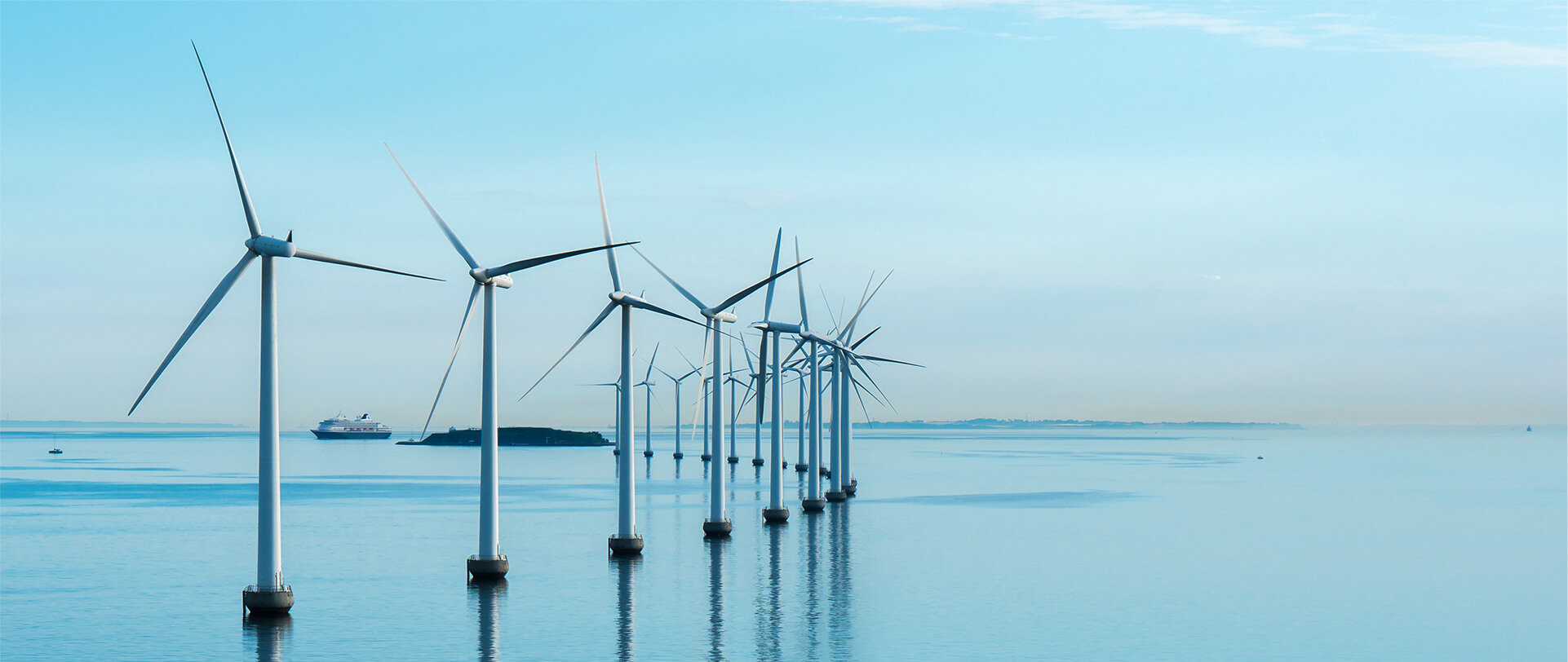As we’ve written about earlier – wind speed is what matters most when determining turbine power output. As wind speed can vary drastically, the ability to forecast how it will behave in the future is important. You can broadly group these forecasts into two categories.
Short-term forecasts on the scale of seconds to minutes. These forecasts are primarily based on statistical methods, calculating how the wind will look in some seconds or minutes based on how it looks now. These short-term forecasts are used to control the turbine and determine how much power it will generate.
Longer-term forecasts on the scale of hours to years. The calculation of these forecasts are not as time sensitive as short-term forecasts, which means they can make use of meteorological models, which are often slow and compute-intensive to run - but more accurate. Longer-term forecasts are primarily used to predict the power output of a parks for energy trading or used when finding good locations for new parks.
What the two types of forecasts have in common, is that they are both based on data of historical wind speed data. However, measuring wind speed is a little more complicated than you might think, particularly close to turbines.
This is because turbines slow down the wind, both upstream and downstream of the turbine. Downstream of the turbine, the wind is slower because energy has been transferred to the turbine. This area of slower wind behind the turbine is called the wake.

Because the wind is slower downstream of a turbine, this means that the wind upstream of the turbine also has a harder time moving – it has to “push” the slower moving wind. This means that for several hundred meters upstream of a turbine, the wind is also slowed down.
Let us keep that in mind as we dive a bit into the different types of sensors that can be used to measure wind speed.
Anemometers
Devices that measure wind speed and direction are called anemometers.
There are many kinds of anemometers, but we will only cover a few – starting with the cup anemometer.
The cup anemometer is one of the most widely used ways of measuring wind direction and speed. Wind blows into the cups, and by measuring how fast the anemometer rotates you can tell the wind speed at a given point in time.
By slightly modifying one of the cups, which makes it more sensitive to wind, you can also tell whether a given cup is moving with or against the wind.
Based on these cyclical changes, a cup anemometer can also determine the direction the wind comes from. Even though Anemometers can determine wind directions, they are often used in combination with a Wind Vane, to tell the wind direction.
Three-cup anemometer
The three-cup anemometer is currently one of the most widely used ways to measure wind speed, and they are useful for both short- and longer-term forecasts: For long-term forecasts, they are used when determining whether a location is a good spot to place a wind park. This is called a wind resource assessment, and often entails mounting cup anemometers and other sensors on large meteorological towers. The sensors then measure wind data over large spans of time. This data combined with meteorological and statistical methods can then determine whether a given location is a good spot for a park.
For short-term forecasts, cup or ultrasonic anemometers along with weather vanes are placed on top of the turbine, so the current wind speed and direction can be measured.
As mentioned earlier, measuring the wind speed close to a turbine is hard. You will get slower wind speeds than the “real” wind speeds, and measuring is particularly difficult behind the blades. This is because as the wind passes through the blades, turbulence is created, leading to large variations in local wind speed.
Spinner Anemometer
One way to solve the turbulence problem is with a Spinner Anemometer, which is a special kind of anemometer that is mounted in front of the turbine.
This has several advantages, one of them being that the wind speed is less disturbed as it hasn’t passed through the blades yet. This means that the results are more accurate.
Light Detection and Ranging (LIDAR)
Let us look at another sensor, with different characteristics than anemometers. Let us look at LIDAR.
LIDAR, the word being a combination of “light” and “radar” can also be used for wind speed measurements.
LIDAR works by shooting laser beams at something, and then measuring the reflection of the laser.
Through measuring the reflections of the laser on tiny dust particles in the air, commercial LIDARs can measure wind speed at ranges of several hundred meters away.
Written by Gustav Wengel, Software Engineer at SCADA MINDS.
Read more on Gustav's code adventures here.

